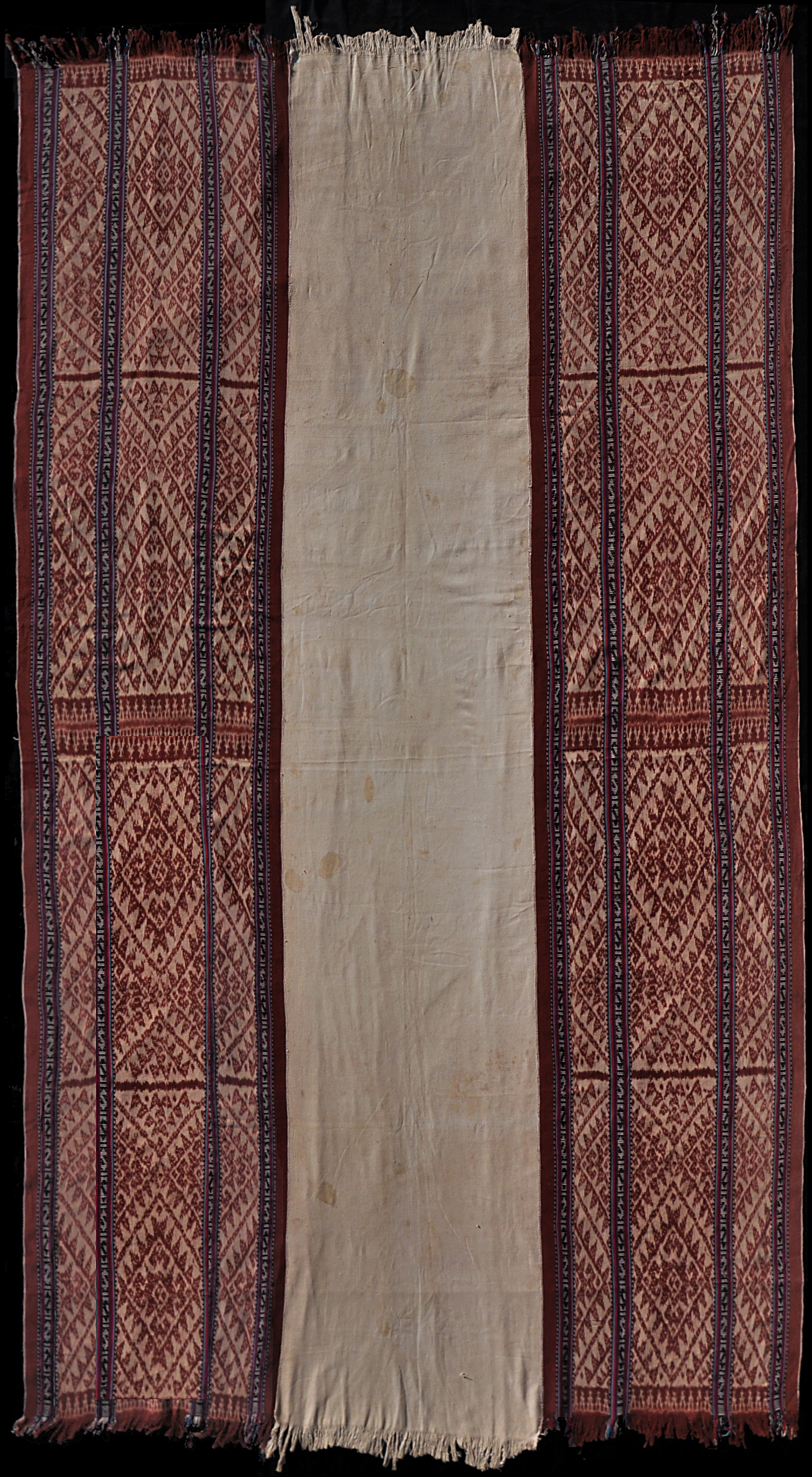| |
 mouse over to magnify mouse over to magnify
| | | | 192 Timor, West Timor
Mau naek (men's wrap)
| | Locale: | Amarasi, Oekabiti clan. | | Period: | 1930-1950 | | Panels: | 3 | | Design: | Plain ecru centre panel flanked by side panels with ikated bands in white on morinda red, showing the kai e'ne or kaif motif that stands for connection to the ancestors, in a form that is typical for the Oekabiti clan - and according to Gittinger has additional associations with headhunting. Narrow bands in white on black sotis (float weave) carry the no'e riu motif (riu, meaning elbow turn). Pinstripes in green and red commercial yarn. | | Size: | 139 x 255 cm (54.7 x 100.3 in) | | Weight: | 1050 g (296 g/m2) | | Yarn: | Cotton, commercial, fine | | Comment: | Very large, example of a vintage Amarasi blanket. Forms a pair with the sarong PC 191. Both stand out by their tight patterning, indicating the hand of a master weaver. The treatment of the motif is identical, so is the tonality of the morinda. The three panels have been joined so carefully that the seam is barely visible, and more easily discovered by stroking the cloth. | | Background: | Additional information in chapters on Timor and West Timor. | | Published: | Ikat Textiles of the Indonesian Archipelago, 2018.
Timor: Totems and Tokens, 2019.
Ikat Textiles of Timor: Indonesian and Timor-Leste, 2025.Ikat Textiles of Timor: Indonesian and Timor-Leste, 2025. | | Compare: | 191 186 | | Sources: | Nearly identical to Amarasi beti from Oekabiti in Yeager and Jacobson, Textiles of Western Timor, Plate 1, and very similar to the one on Plate 3, except that the ikat work in our piece was done in vegetable dyes. Characteristic fine stripes in commercial yarn that separate the ikated bands very similar to those in detail shots on Plates 6 and 7. Similar to beti in Rautenstrauch-Joest Museum, depicted in Khan Majlis, Woven Messages, Fig. 453. Similar to pre-1932 beti in Hamilton and Barrkman, Textiles of Timor, Fig. 2.19. Also similar to beti in Fowler Museum, Object ID UCLA FMCH X80.287, with long caption by Hamilton. A similar beti is warn by warrior in ceremonial attire on the side of the Raja of Amarasi on 1895 photo in Leigh-Theisen and Mittersakschmöller, LebensMuster: Textilien in Indonesien, Abb. 153. | | |
 ©Peter ten Hoopen, 2025
All rights reserved.
|
|


